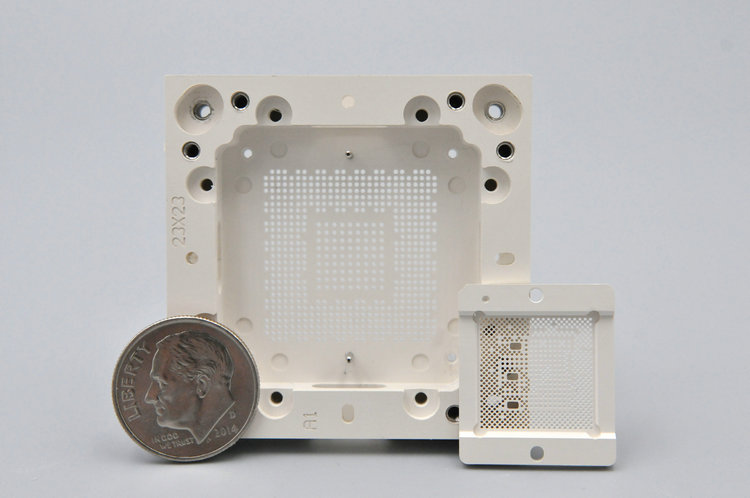
The Importance of Annealing PEEK Before Machining
PEEK (Polyether Ether Ketone) is a high-performance thermoplastic known for its exceptional mechanical properties and thermal stability, making it ideal for demanding applications. However, to maximize its performance during machining, annealing is a crucial process. This article explores the specific benefits of annealing PEEK, how it enhances machinability, and the risks associated with skipping this step.
Benefits of Annealing PEEK Before Machining
Stress Relief: Annealing effectively relieves internal stresses that accumulate during manufacturing processes such as molding or extrusion. By reducing these stresses, the risk of warping or cracking during machining is minimized, ensuring dimensional stability and integrity of the machined parts.
Improved Machinability: The annealing process softens PEEK, making it easier to cut and shape. This reduction in hardness leads to smoother cutting operations, better surface finishes, and reduced wear on cutting tools. Softer materials are generally easier to machine, resulting in less force required from the cutting tools.
Increased Crystallinity: Annealing enhances the crystallinity of PEEK, which contributes to improved mechanical properties such as strength and stiffness. Higher crystallinity also helps maintain dimensional accuracy during machining.
Prevention of Surface Cracks: By relieving internal stresses and softening the material, annealing significantly lowers the likelihood of surface cracks forming during machining operations. This is particularly important for intricate designs or deep drilling operations where thermal stresses can lead to cracking.
Dimensional Stability: Annealed PEEK exhibits better dimensional stability under machining conditions, which is crucial for applications requiring tight tolerances and high precision. This stability helps prevent issues related to thermal expansion or contraction that can occur during machining.
Minimized Deformation: Annealed parts are less prone to deformation during machining, which is critical for maintaining the shape and performance of components, especially those with complex geometries or thin walls.
Facilitation of Complex Machining Operations: For parts requiring high precision or complex geometries, intermediate annealing can be beneficial. It allows for rough machining followed by annealing and then finishing operations, ensuring that parts achieve better flatness and tighter tolerances throughout the process.
How Annealing Improves Machinability
Annealing improves the machinability of PEEK through several mechanisms:
Stress Relief: By relieving internal stresses, annealing reduces the risk of warping or dimensional inaccuracies during machining.
Softening the Material: The softening effect allows for smoother cutting operations and reduces tool wear.
Improved Dimensional Stability: Enhanced stability means that parts are less likely to deform under pressure from cutting tools.
Increased Crystallinity: Higher crystallinity improves resistance to deformation during machining.
Reduction of Surface Cracks: Lower likelihood of cracks enhances part integrity.
Facilitation of Complex Operations: Allows for better handling of intricate designs through staged processing.
Risks of Not Annealing PEEK Before Machining
Failing to anneal PEEK before machining poses several significant risks:
Internal Stresses: Unrelieved internal stresses can lead to warping or dimensional inaccuracies during machining.
Increased Risk of Cracking: Heat generated during machining can exacerbate existing stresses, leading to surface cracks that compromise structural integrity.
Poor Surface Finish: Increased tool wear and thermal deformation may result in rougher surfaces, necessitating additional finishing operations.
Dimensional Instability: Residual stresses can cause parts to warp or change shape after machining, leading to assembly issues.
Tool Wear and Damage: Increased hardness can lead to rapid wear on cutting tools, increasing costs and downtime.
Compromised Mechanical Properties: Unaddressed internal stresses may reduce strength and stiffness in machined components.
Inefficient Machining Operations: Complications such as vibrations or chatter can degrade surface quality and reduce efficiency.
Recommended Annealing Process
The typical steps for annealing PEEK before machining include:
Heating: Place PEEK in an air-circulating oven and gradually heat it to around 300°F (approximately 150°C) at a controlled rate (e.g., 20°F per hour).
Holding: Maintain this temperature for a specified duration (often several hours) to ensure even heat distribution throughout the material.
Cooling: Allow the material to cool down slowly back to room temperature.
In summary, annealing PEEK before machining is essential for enhancing its machinability, preventing defects, ensuring dimensional accuracy, and improving overall part performance in demanding applications. The benefits far outweigh the risks associated with skipping this critical step, making it a necessary practice for achieving high-quality machined components from PEEK. This comprehensive article encapsulates the key points regarding the importance of annealing PEEK before machining while providing a clear understanding of its benefits and associated risks.